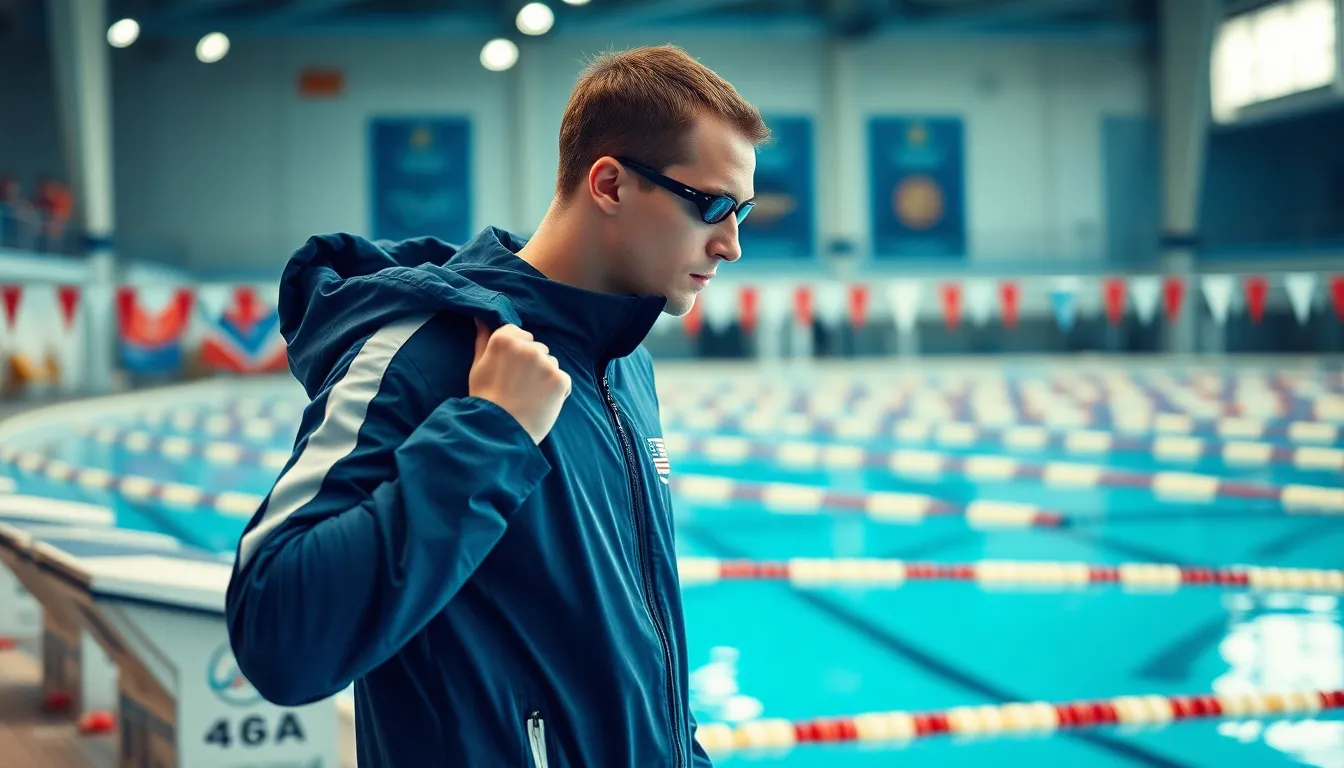Table of Contents
ToggleOlympic swimmers might look like they’re ready to conquer the waves, but what’s with those coats? It’s not just a fashion statement to make them look cooler than the rest of us. These sleek garments serve a purpose that goes beyond keeping them warm. Picture this: you’ve just dived into icy waters, and now you’re expected to perform like a dolphin on a caffeine rush.
Purpose of Wearing Coats
Olympic swimmers wear coats primarily for functional benefits rather than for style. These garments play a crucial role in enhancing performance by addressing temperature-related challenges.
Keeping Warm Before Events
Warmth is essential before events. Swimmers often experience cold air temperatures, especially in outdoor venues. Coats help to retain body heat and prepare them for the intense physical effort required during competition. They create a barrier against the elements, allowing athletes to stay comfortable and focused. Before stepping onto the pool deck, wearing a coat can prevent muscle stiffness and reduce the risk of injuries, providing an edge in performance when it’s time to compete.
Regulating Body Temperature
Maintaining an optimal body temperature is vital for peak performance. Swimmers face drastic temperature changes after exiting pools. Coats effectively minimize sudden drops in body temperature, ensuring muscles remain warm and responsive. By regulating temperature, these garments enable athletes to avoid fatigue and maintain energy levels throughout their events. Proper thermal management ultimately enhances overall efficiency in the water, helping swimmers achieve their goals more effectively.
Types of Coats Worn by Olympic Swimmers

Olympic swimmers wear various types of coats that serve both functional and competitive purposes. Understanding these differences highlights their importance in performance.
Material and Design Features
Coats for Olympic swimmers often utilize lightweight, waterproof materials. Neoprene is popular due to its insulation properties while being flexible. Many coats feature breathable fabrics, allowing moisture to escape while retaining warmth. Thermal lining enhances heat retention, ensuring athletes stay warm before events. Some designs incorporate aerodynamic cuts that reduce drag, improving overall performance. Others include practical elements like pockets for personal items, further enhancing convenience.
Differences Between Practice and Competition Coats
Practice coats focus on comfort and warmth during training sessions. These garments typically feature heavier materials, providing insulation in cooler environments. Competition coats, on the other hand, prioritize performance and aerodynamics. They’re often designed with lighter fabrics that allow for greater freedom of movement. Competition coats may also have specific designs aimed at reducing drag in the water, offering a competitive advantage. Swimmers often choose coats based on the setting, ensuring they have the right support in both practice and competitive scenarios.
Psychological Benefits of Wearing Coats
Wearing coats provides significant psychological advantages for Olympic swimmers. These garments contribute to enhancing mental focus and reducing pre-competition stress.
Confidence and Mental Preparation
Swimmers often experience a boost in confidence when they don personalized coats. These garments create a sense of unity within the team, fostering camaraderie and shared purpose. Coats serve as visual symbols of commitment and professionalism, helping athletes feel more prepared for competition. When wearing their coats, swimmers can concentrate on their performance, allowing them to visualize success and embrace a winning mentality. Many athletes associate their coats with their best performances, reinforcing positive mental associations that help build confidence before races.
Reducing Pre-Race Anxiety
Coats also play a crucial role in minimizing pre-race anxiety. The act of putting on a coat can become a ritual that calms nerves and centers focus. This preparation routine signals readiness, helping swimmers mentally transition from practice to competition mode. Athletes often report feeling more secure when bundled in their coats, creating a comforting barrier against external pressures. The warmth of the coats can physically relax muscles and ease tension, further contributing to a state of calm. Overall, the psychological impact of wearing a coat directly influences an athlete’s mindset, enhancing their competitive edge.
Olympic swimmers’ coats play a crucial role in their performance and well-being. By providing warmth and comfort they help athletes stay focused and ready to compete. The combination of thermal management and psychological benefits ensures that swimmers can maintain their peak performance even in challenging conditions. As they don these specialized garments they not only enhance their physical readiness but also bolster their mental game. Ultimately these coats are essential tools that support swimmers in achieving their competitive aspirations.





